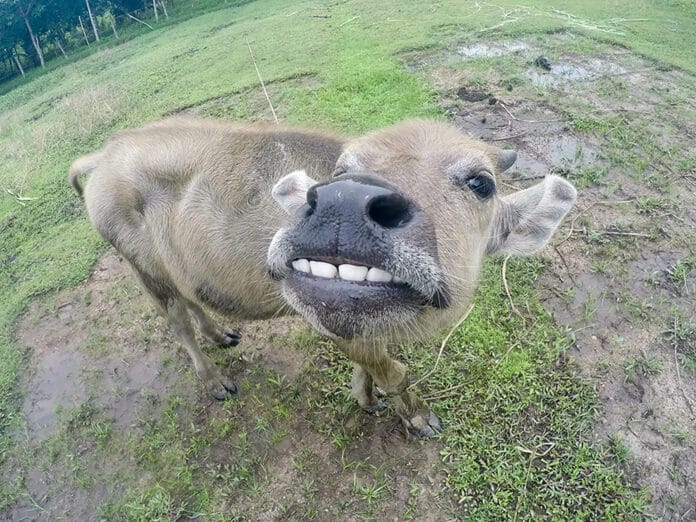STOCKTON — “For a cow-calf producer selling more pounds of healthy calf at weaning time improves operation profit potential,” says Patrick Davis MU Extension Regional Livestock Field Specialist. Davis urges cattle producers to reduce calf weaning stress which improves calf performance and health after weaning and can lead to premiums on their calves. Davis will share thoughts on use of fence-line weaning as a way to reduce stress at weaning time.
“Fence-line weaning improves post weaning calf weight gain,” says Davis. University of California-Davis research shows improvement in fence-line weaned calf gain by 95% in the first two weeks and 31% over the 10-week period after weaning compared to the traditional weaned calves. Furthermore, this research showed fence-line weaned calves did not go off feed, had less vocalization, and less stress activity compared to traditional weaned calves. “This shows fence-line contact between cow and calf during the weaning process helps reduce stress activity and results in better post weaning performance,” say Davis.
“Fence-line weaning of calves promotes activities post weaning that improve calf health,” says Davis. Ohio State University research reported fence-line weaned calves had reduced incidence of respiratory disease which is a major cause of health issues post weaning. Improved gain and reduced respiratory disease should lead to better calf performance and cattle operation profit potential.
“Fence-line weaning may require thinking through some facility modification,” says Davis. There should be a very substantial fence between the calves and the cows. Types of fencing systems may include barbed wire overlayed with woven wire, electric wire fence, or electrified wire outrigger approximately 12 to 15 inches on the calf side of the fence. Davis urges cattle producers using electric fence in the weaning process to make sure it is really hot and the calves are adapted to it.
“Weaning calves in familiar surroundings will help reduce stress during weaning time,” says Davis. Davis urges cattle producers to acclimate the cow-calf pairs to the weaning pasture before weaning the calves. Also plan to have high-quality grass in front of the calves during the weaning period.
“The fence-line weaning process will take approximately 7 to 14 days,” says Davis. Once the cows and calves are not associating with each other at the fence, the calves can be moved to a permanent pasture.
For more information on fence-line weaning and other ways to reduce stress at weaning time to improve health and post weaning performance of calves contact your local MU Extension Livestock Field Specialist.



















